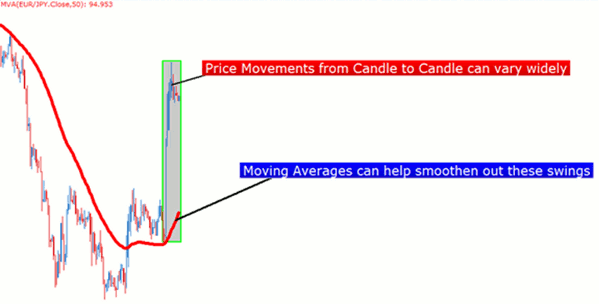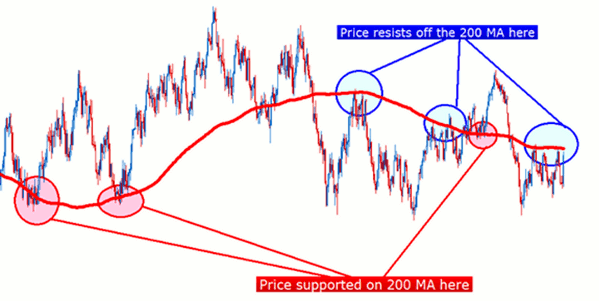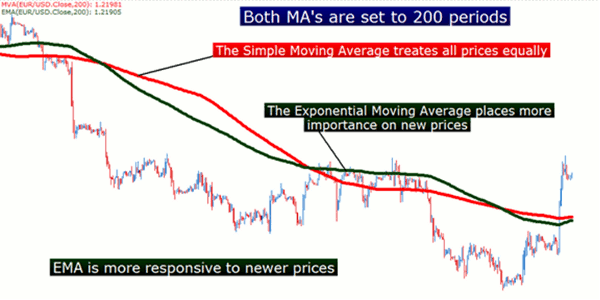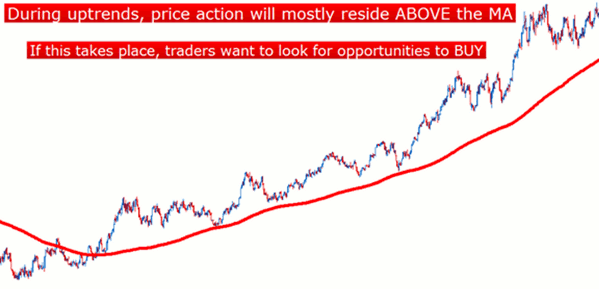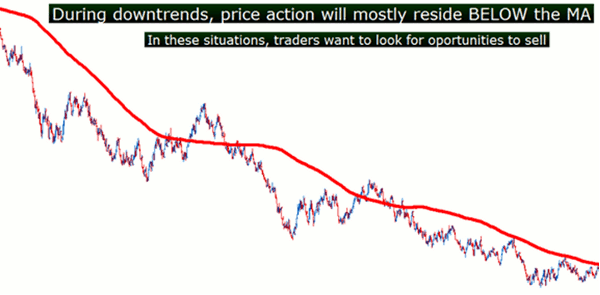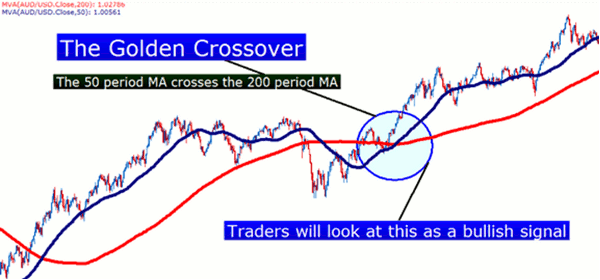James Stanley of DailyFX.com explains how various moving averages can provide a way for currency traders to find profitable trades.
One of the first indicators that traders will often learn is the moving average. Moving averages are simple to calculate, easy to understand, and can provide quite a few different utilities to the trader.
In this article, we’ll talk about the more popular uses of this versatile indicator, some of the more commonly looked at moving average inputs, and how traders most often apply them.
The Basics of the Moving Average
At its root, a moving average is simply the last X periods' price divided by the number of periods. This gives us the "average" price over the last X periods. And this will be expressed on the chart, much like price itself.
Looking at price movements expressed as an average can present quite a few clear benefits, the primary of which is that the wide variations from candlestick to candlestick are modulated by looking at the average price of the last X periods.
Traders often have the question of whether price is too high or too low—but by simply looking at the average price for this candlestick (in consideration of the prices over the last X periods), the trader gets the benefit of automatically seeing the bigger picture.
Many traders will take the indicator’s usage much further; hypothesizing that when price intersects with a moving average, something or other might happen. Or perhaps traders will imagine that if two moving averages crossover, some special event may take place.
We’ll discuss this below, but for now, just know that the most basic usage of a moving average is to modulate price—attempting to eradicate questions that may pop up from the erratic price swings that can take place from candle to candle.
Commonly Used Moving Averages
There are quite a few different flavors and flairs of moving averages. Some came about out of trader necessity; others came about from traders simply trying to "build a better wheel."
The most basic moving average is the Simple Moving Average, which we explained the calculation of above. Traders will use quite a few different input periods for moving average, for a number of different reasons.
The most common moving average is the 200-period MA, and many traders like to apply this to the daily chart. It is of the belief that most trading institutions—banks, hedge funds, Forex dealers, etc—watch this indicator. Whether it is true or not can, unfortunately, not be substantiated, as most of these institutions keep their trading systems and practices proprietary.
However, one look at this indicator on any of the major currency pairings can seemingly prove its worth. The chart below will highlight some of the interesting price action that can take place with the 200-period moving average applied to a daily chart:
Many traders also like to watch the 50-period moving average. This is thought to be a faster moving average, since fewer input periods are used, and the primary effect is that this moving average will be more responsive to more near-term price movements. The picture below will show how the 50-period moving average stacks up to the 200:
Other commonly used input periods are 10, 20, and 100.
Some traders commonly use numbers from the Fibonacci sequence as moving average inputs, as shown in my scalping strategy in the article Short Term Momentum Scalping in the Forex Market.
Next: Exponential Moving Averages
|pagebreak|Exponential Moving Averages
Out of trader necessity to more closely follow near-term price movements, as many traders feel recent price changes to be more relevant than older price variations, the Exponential Moving Average will place higher importance on price values registered more recently.
Since more recent prices are weighed more heavily than older price swings, the indicator becomes more adaptive to the current price environment. In the picture below, we’ll compare the 200-period moving averages as Simple and Exponential MAs.
Identifying Trends with Moving Averages
Since moving averages provide the luxury of showing us price in consideration of the last X periods, we have the luxury of being able to observe tendencies which we may be able to take advantage of. Nowhere is this more prevalent than when using this indicator to define trends, which is often the most common application of the moving average.
If price action is consistently residing above its moving average—with the moving average inevitably pulling higher to reflect these increasing prices—traders can consider the chart to be showing an uptrend.
Moving Averages as Support and Resistance
As we were able to see in the above picture of the 200-period moving average, peculiar events can take place when price interacts with one of these lines.
As such, many traders will look to moving average intersections as opportunities to buy uptrends cheaply, or to sell downtrends when price is thought to be expensive. The thought being that while an uptrend takes a break by moving lower, down to its average, traders can jump in while price is relatively low. The picture below illustrates further:
Next: Moving Average Crossovers
|pagebreak|Moving Average Crossovers
Some traders will take the utility of the moving average a step further, hypothesizing that when two of these lines cross, something may happen. The "Golden Crossover," often referred to in the financial press, is simply the 50-period moving average crossing the 200-period MA. When this happens, some believe that price will continue moving in the direction of the crossover.
Some traders feel moving average crossovers can be ineffective, as they can often produce considerable lag to a trader's analysis, compelling traders to buy after an uptrend is well entrenched, or to sell when a downtrend may be nearing its end.
James Stanley is a trading instructor with DailyFX.com.

